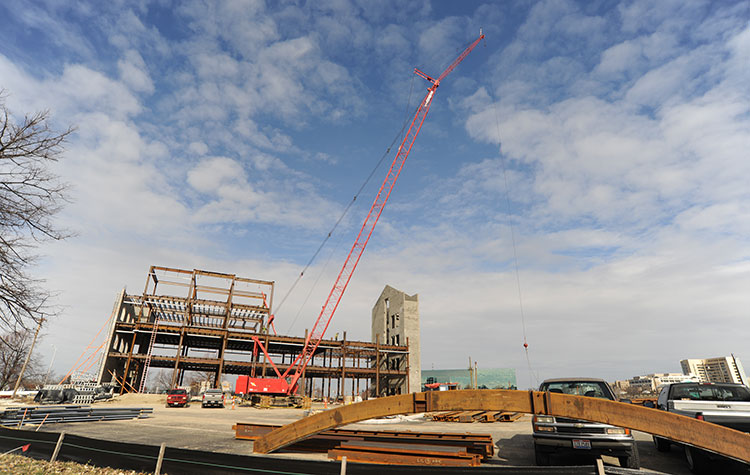Document Type
Conference Paper
Publication Date
7-2016
Publication Source
Review of Progress in Quantitative Nondestructive Evaluation
Abstract
Carbon fiber composites have been increasingly used in aerospace, military, sports, automotive and other fields due to their excellent properties, including high specific strength, high specific modulus, corrosion resistance, fatigue resistance, and low thermal expansion coefficient. Delamination, or interlaminar fracture, is a serious failure mode leading to a loss in composite stiffness and strength. Manufacturing process defects such as voids degrade the fatigue life and delamination resistance of the composite. This study investigates the effect of voids on fatigue interlaminar fracture behavior of carbon fiber composites. Samples with different vacuum levels: 0%, 50% and 100% were fabricated by varying the vacuum in the hand layup vacuum bagging manufacturing process. Delamination and void content were investigated using eight different NDE methods: X-Ray laminography, X-Ray refraction, ultrasonic testing, high frequency eddy current imaging, pulse thermography, pulse phase thermography and lock- in-thermography and thermal conductivity measurements,. Then, the static interlaminar fracture behavior under Mode I and Mode II were conducted, as well as Mode I in fatigue. The results of X-Ray laminography, X-Ray Refraction, pulse thermography and pulse phase thermography were the most successful NDE technique for quantifying imperfections of the materials and for instance void shape, area fractions, size and distribution. However, X-Ray laminography gave the most accurate percentages of voids among the other NDE methods, as it provides hundreds of scanned images through the sample’s thickness with the most important advantage being the 3D representation.
Thermal conductivity measurements showed that the voids lead to a decrease in thermal conductivity through-thickness. The ultrasonic method detected the delaminations but was not successful and quantifying the void content. The eddy current and lock-in-thermography were also not well-suited for detecting voids. Results of static Mode I and Mode II showed that voids can lead to a decrease in interlaminar fracture toughness. In addition, the presence of voids lead to a decrease in Mode I cyclic strain energy release rates fatigue life.
Document Version
Published Version
Copyright
Copyright © 2016, Iowa State University
Publisher
Iowa State University
eCommons Citation
Hakim, Issa; Meyendorf, Norbert; Donaldson, Steven L.; Laquai, René; Walter, David; Müller, Bernd; and Graja, Paul, "Correlating Interlaminar Fatigue Fracture Behavior to NDE Parameters in Carbon/Epoxy Composites Containing Voids and Delamination" (2016). Civil and Environmental Engineering and Engineering Mechanics Faculty Publications. 24.
https://ecommons.udayton.edu/cee_fac_pub/24
Included in
Civil Engineering Commons, Geotechnical Engineering Commons, Other Civil and Environmental Engineering Commons




Comments
This document is provided for download in compliance with the publisher's policy on self-archiving. Permission documentation is on file.